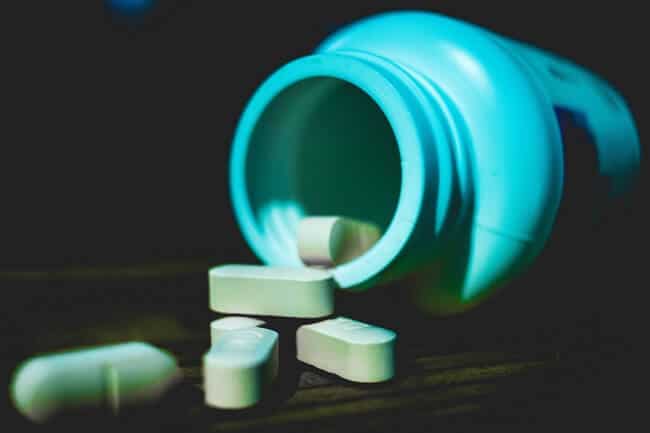This was the call I received from a woman who was desperate to get off her opioid pain medication. To protect her privacy, her name has been changed for the purpose of this post.
Janine is a 52-year-old woman who had her first surgery in her late twenties for a gastric by-pass. She did fairly well and lost about eighty pounds, which she was able to keep off for several years. In her mid-thirties, she had complications with the surgery and for the next eleven years, she had a series of operations to repair, revisit, or revise the original surgery. These were difficult years and Janine experienced almost constant pain, even when she was months beyond the actual procedures.
She was maintained on her pain medications first by her gastro-intestinal surgeon, then by her primary care doctor.
The CDC defines chronic pain as “pain lasting longer than 3 months or past the time of normal tissue healing outside of active cancer treatment, palliative care, and end-of-life care.” But as the condition of chronic pain continues to be studied and understood, the more evidence builds for using non-pharmacologic interventions and non-opioid medications.
What are the best ways to treat chronic pain without opioids?
Opioid pain medications such as Percocet®, Roxicet®, Vicodin®, Dilaudid®, and fentanyl create a physical tolerance in the body which means a person needs more of the same medication to have the same effect. Over the years, Janine’s doctors, in an effort to help her discomfort, continued to increase her dosage.
Now, eight years after her last surgical procedure, Janine is maintained on an average of 200mg of oxycodone daily.
She has never ‘gone to the streets’ to buy her medication, although she admits that one time her medication was lost or possibly taken, and when she ran out, she borrowed from a friend. She had signed an agreement with her primary care doctor that said if she lost her medication it would not be replaced. She was terrified to be released from the practice with no alternative and equally terrified to experience withdrawal.
What is included in a Pain Management Agreement with your doctor?
She has tried many times over the years to stop taking these medications. Janine had discussed getting off her pain medication with her doctor and he had her on lower doses from time to time, but invariably she found she needed the higher doses just to feel normal.
The truth was, he really didn’t want to keep prescribing it for her, but he was trying to help her out. Like many primary care doctors, he was not really sure how to help her get completely off opioid medication. Janine was not always able to have an appointment with her regular doctor, and others in the office were not comfortable prescribing controlled medications to her. She felt trapped.
The CDC concedes that most primary care providers are concerned about patient addiction and report insufficient training in prescribing opioids. Explicit guidelines exist for prescribing opioids in the primary care setting, but even slowly tapering patients off these medications is a long, drawn-out, and difficult process.
Janine found the Coleman Institute for Addiction Medicine online and called us at 703-991-0330. She had a lot of excellent questions and we had a long chat, allowing her to ask every question she had about our accelerated opioid detox process. She is scheduled to come in for a four-day opioid detox with us in two weeks.
What to expect when you sign up for an Accelerated Opioid Detox at the Coleman Institute in Richmond, Virginia?
Janine will stop taking her oxycodone the evening before she arrives, and a support person is required to be with her at all times. Janine’s husband, Jim, is coming with her. After signing the paperwork, meeting with our aftercare team, and having any other questions answered, our nurses will draw labs and get an EKG. Our labs are looking for a normal red and white blood count, checking the health of the liver and kidneys, and looking for the blood-borne infections Hepatitis C and HIV.
We will give Janine her first dose of comfort medications in the office and thoroughly explain the record-keeping and medication schedule to Jim, who will give the rest of the doses. A nearby pharmacy will deliver all the needed medication right to our office so they won’t have to navigate around an unfamiliar town looking for a pharmacy.
She will receive a very small injection of naltrexone and they will head back to a hotel, which is about 7 minutes away.
For the next two days, Janine and Jim will come to the office for check-in and for Janine to receive low doses of naltrexone. Her final day will be a long day. We will have them in a private room with their own bathroom. We’ll provide lunch for Jim, and we will slowly, gently flush off whatever oxycodone may still be left on Janine’s opioid receptors. When that’s done, usually by around 3:00-4:00 o’clock, we will insert a naltrexone implant in her abdomen and send them home.
This may be more than you need to know for now, but if you have any questions or your well-meaning doctor is uncertain how to help you, please give us a call—or have him call us at 877-773-3869. Dr. Coleman meets regularly with insurance executives to help them understand our extremely successful process for opioid detox and encourage them to provide coverage, and so it’s possible your insurance will pay for this procedure.
Even if you have been on chronic pain medications for years and years, you can get off of them. We witness this every single day.
Joan R. Shepherd, FNP


